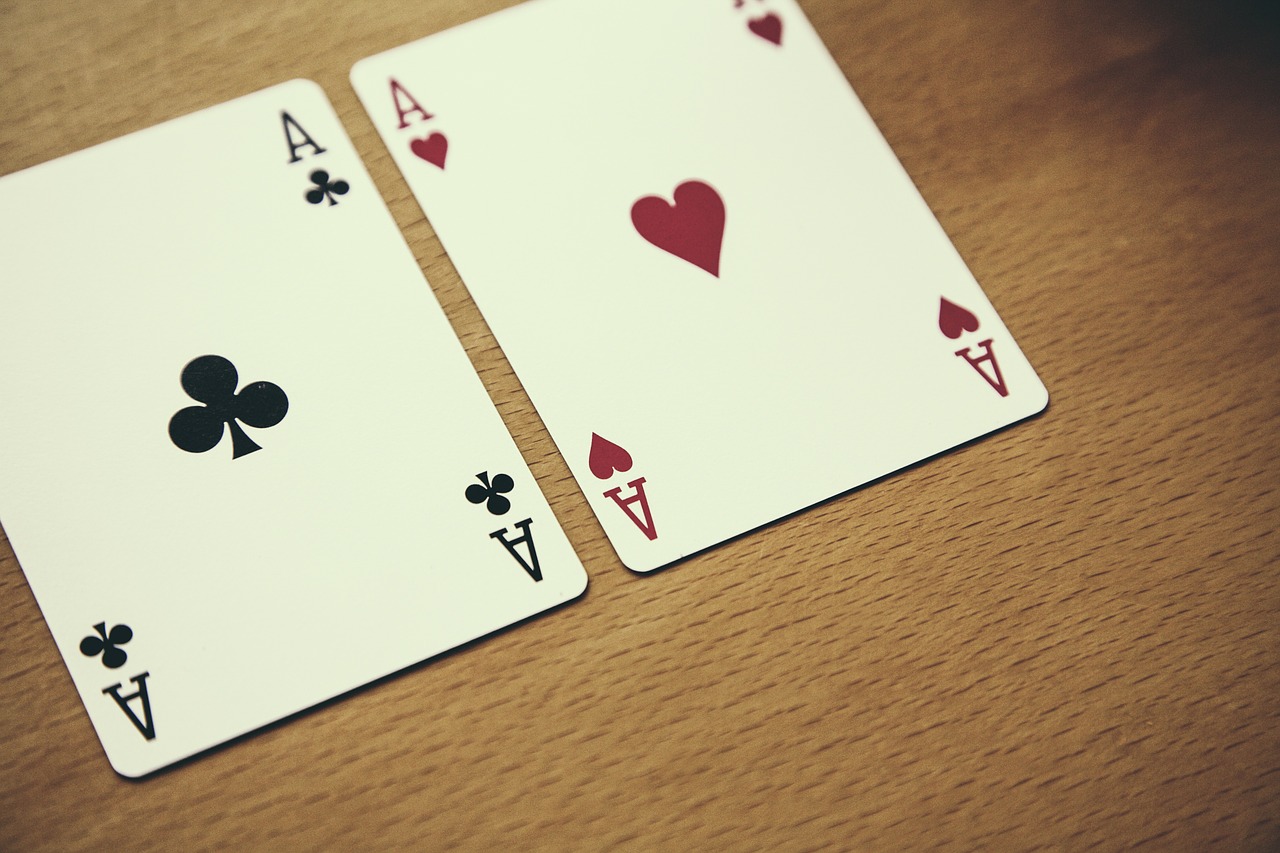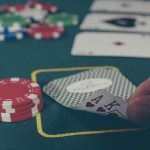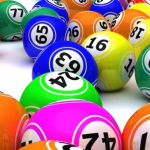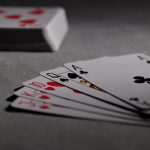
What you need to consider during the pre- flop
In order to get a clear picture of the pre–flop game, you need to understand what exactly means your position at the table and why it is so important. If we consider a standard game table with ten players, we can distinguish the following positions:
- Small Blind (SB) – this is the player who acts before the last during the pre- flop and acts first during the next betting rounds;
- Big Blind (BB) – this is the player who acts last during the pre- flop and acts second during the next betting rounds;
- Early positions (EP 1, EP 2, EP 3) – these are the three players to the left of the Big Blinder. They open the pre- flop betting round. The first position to the left of the Big Blinder is called also “under the gun” position (UTG);
- Middle positions (MP 1, MP 2) – these are the two players with 6th and 7th position at the table (since position 1 belongs to the SB);
- Late positions (LP 1, LP 2, LP 3) – these are the players with 8th, 9th, and 10th position at the table. The 9th position is also called “Cutoff” position (CO) – this is the player to the right of the dealer (button). The 10th position is the dealer’s position, also called the button. When it comes to gathering information about your opponents, this is the most advantageous position.
Many things during the betting rounds depend on the player’s position. For example, during the pre-flop it is the position that determines what cards are worth playing, and how. The late positions are considered the best ones because the player acts, knowing the actions of his opponents, and that in most of the cases helps him to evaluate the strength of their hands.
There are four groups of cards with which you can enter the game (pot limit and no limit Hold’em): pairs, overs, suited connectors and non – suited connectors.
The main philosophy of the flop
The main philosophy of the flop is as follows: if you attacked (raised) during the pre- flop, you should continue the attack on the flop since the loss of initiative very often leads to a loss of the pot. This is true for the majority of situations occurring on the flop. You should continue insisting on the strength of your hand (the flop should not confuse you explicitly almost never). In fact, you link this general principle with the number of your opponents and of course, with the structure of the flop, with your position, as well as with the strength of your hand. All of these factors should be considered since all of them are very important.
Types of the hands on the flop
We can say that there are five main types of hands on the flop (according to our hands evaluation). Of course, this evaluation can drastically change after the flop since the strength of the hand depends on the flop structure together with the hand we already have (a top pair, flush draw, two pairs etc.), the number of the opponents, our moves during the pre –flop and our opponents moves (since we guess what is our opponents’ hands based on their actions). The five types from lowest to highest are as follows:
Type 1: Garbage. This is a hand with no chance of improvement at all or a winning chance at the showdown.
Type 2: Draw hands. This type of hands do not have a chance to win on the flop (if there is a showdown) but they can be improved to the winning hands on the turn or the river. Most often these are open ended (two way) straights (for instance, if your pocket cards are Jack of spades and 9 of clubs and the flop is 10 of hearts, 8 of diamonds and 3 of spades, any Q or 7 will help you to form a straight) and flush draws. Strong draw combinations are considered the ones with 8 (open ended straight) or more not discounted outs to make a winning hand. Weak draws are all other draws, for example, the gapped straights (four outs).
Type 3: Weak hands. These are hands with almost no chances to be the strongest at the showdown. Most often these are any pairs except the top pairs with a good kicker and overpairs, as well as top pairs with good kickers when the flop has dangerous structure.
Type 4: Marginal hands. These hands are strong enough and have the chance to be the strongest hands at the showdown. However, with these hands you don’t need to risk all your chips. Typically, before you go all-in with such a hand, you should consider the following: how many are the possible hands of your opponents, with which, being weaker than yours, they’ll decide to risk all the stack of chips. If there are little possible hands, then, as a rule, you will either win a small pot when your opponent folds, or lose big pot when your opponent answers your bet. Most often these hands are top pairs with good kicker, sometimes – low two pairs or over-pairs, as well as sets and two pairs, when the flop is very dangerous.
Type 5: Strong hands. By strong hands we understand those hands with which we can almost always consider ourselves winners. These are mostly the sets, flushes, straights, and overpairs. Of course, there are some exceptions. If your hand is King of hearts and a king of clubs and the flop is King of spades, 7 of diamonds and 2 of hearts, you absolutely have nuts. If your pocket cards are 2 of spades and 2 of clubs, you have the third type of hands but it can be considered a strong hand and play it as nuts combination. Of course, you can lose your stack against a set, but it happens so rarely, that cannot play any key role in your mathematical expectation.
If your hand is Jack of diamonds and Jack of clubs and the flop is Queen of spades, Jack of diamonds and 10 of spades, your hand isn’t a nuts hand. If you have more than one opponent and during the pre –flop the betting round was very active, this hand is not a strong hand anymore. If for instance, you have 5 opponents, it is very possible that one of them has a stronger hand.
In case you raised (attacked) during the pre–flop
Let’s see what are the basic conceptions of playing the flop according to the type of hand on the flop if during the pre –flop you were an aggressive player.
If your hand belongs to type 5, your main purpose should be to make the pot as big as possible. In other words, you should attack regardless of the number of opponents and position. Another possible way to play the strong hands is the slow play (to check and call with a strong hand) but it is less profitable since it is very hard to make the pot bigger with a slow play. You need to play aggressively and hope that your opponents have strong enough hands to play.
If your hand belongs to type 3 (weak hands) your main task is to lose as less as possible. Against one opponent you should continue the attack on the flop, but against 3 opponents the best you can do is to check or fold. Against 2 opponents the way you play depends on your position and the structure of the flop. The more dangerous for you is the flop and the worse your position, the more you should refuse to continue the attack on the flop (you can get a call or even a raise on a draw-combinations and the strength of your hands is not enough to continue the fight for the pot). But if the flop is safe, you should continue to insist on the strength of your hand.
If your hand belongs to type 1 (garbage), it is preferable to play check – fold.
There is an exception – when you play against one opponent, you have attacked during the pre–flop and your opponent already said check on the flop. In this situation, the preferred move is to bet, especially if there is an overcard on the flop, and there are no suited or connected cards (for example, flop of the type K, 8, 3).
If your hand belongs to type 2 (and during the pre flop you were the one who attacked), the preferable play is to attack on the flop (bet or raise), especially if you have a strong draw combination (11 ore more outs). If the chances your opponents to fold are small, you can also call, especially if you are in good position. You should fold only if the chances your opponents to fold are small and there is no chance to call.
The most complicated is the situation when we have hand that belongs to type 4 (marginal hands).If you play against one opponent you should always continue the attack and play your hand as nuts hand. If you play against 3 opponents and the structure of the flop is dangerous, you should be ready to fold in case your opponents counter– attack.
Usually it is a mistake to go all in with a marginal hand if during the pre –flop there were 3 or more opponents who answered your raise. If you play against 2 opponents, you always continue the attack on the flop with marginal hands but you play carefully on the next streets, especially if somebody called when you bet on the flop (there is a possibility your opponent to have a set). If there is a possibility that your opponents have draw hands, you should play your hand as aggressive as possible.
In case you didn’t raise during the pre–flop
Tight play during the pre –flop narrowing the range of your starting hands, makes your play on the flop much easier even if you did not raise during the pre–flop. In a way you are solving the same problems as after a pre–flop raise, the difference is only the weaker range of hands of your opponents.
In case your hand belongs to type 5, nothing changes and you should act the same way as in the previous situation. You need to play aggressively and hope that your opponents have strong enough hands to pay.
The most complicated situation again is in case you hand belongs to type 4 (marginal hands) against two opponents. Here also it is a mistake to go all in with a marginal hand if on the flop there are 3 or more opponents.
Against two opponents with these hands you tend to attack on the flop (like after pre–flop raise) but you should take into consideration that in this situation (there wasn’t raise during the pre-flop) the chance some of the opponents to have two pairs or draw straight significantly increases (but decreases the chance someone to have a set). Nevertheless, in this situation, the existence of possible draw-combinations should be a signal for you to play aggressively. Generally, with marginal hands you can always attack, while your opponents do not resist too hard.
If your hand belongs to type 3 (weak hands), your main goal is still to lose less money.
This is especially noticeable when there was no raise during the pre –flop, the pot is not big, and the chance that someone from the opponents has a good, but disguised hand grows. Nevertheless, on a safe flop you can sometimes try to pretend you have a strong hand.
If your hand belongs to type 2 (and you didn’t raise during the pre -flop), the strong draws (with 11 or more outs) should be played aggressively, especially if you are in a bad position. If the chance that your opponents will fold is small, it is preferable to call (especially when you have a good position). You can fold if after you raise the probability that your opponents will fold is small, and you don’t have chances to call. In particular, it is recommended to all players who have draw combinations with less than 8 outs, to consider check –fold.
If your hand belongs to type 1, you should consider check- fold.
For the blinds (if there was not any raise during the pre -flop) it is recommended more frequent use of specific techniques such as check-raising (particularly if on the flop there are no two cards of one suit, three connected cards like 7, 8, 9 or better). For example, with three opponents you should better check –raise if you have a hand which belongs to type 2, 4 or 5. In case you have two opponents, the check- raise is much less effective (there is always a risk that after you no one would place a bet). If the flop includes two suited cards, you should prefer immediate aggression (bet) in case your hand belongs to type 4 or 5, or you have a very strong draw combination or the passive tactics of check–fold, check–call in case you have not very strong draw combination or weaker hand.
War of re–raises
You have also a chance to win in case of “war of re -raises” (if you have a marginal hand or a draw-hand), and you play one on one.
If your stack is short, and the marginal hand is a top pair or better, you can go all- in in case your opponents attack. With any hand which belongs to type 3 (weak hand), you should fold. These are the boundaries. Usually, the main problem here is to play hands which combine features of more than one type.
For example, a typical situation is a low pair and a draw combination, against a higher pair. In this case, the main factor for you should be the pot odds.
In order to evaluate your chances of winning, you should have an idea about your opponents’ hands. In case you do not have the necessary experience to do so, you can assume with a sufficient degree of probability, that your opponent has a top pair with some good kickers. You can try to calculate your chances of winning against this combination of your opponent (top pair). Then you need to compare this value with the pot odds.
Top Poker Rooms
Latest Articles
Super Welcome Bonus

Open a new account today at Sky Poker and enter promo code 'POKER' and you will automatically get a £5 No Deposit Bonus and entered into 2x£2500 New Player Freerolls
Check the site for details.








There are no comments so far